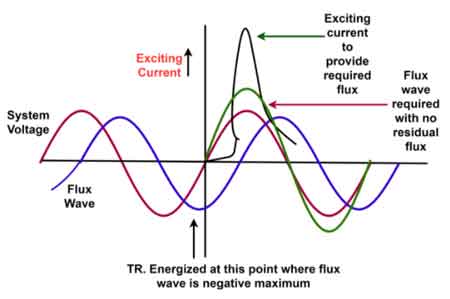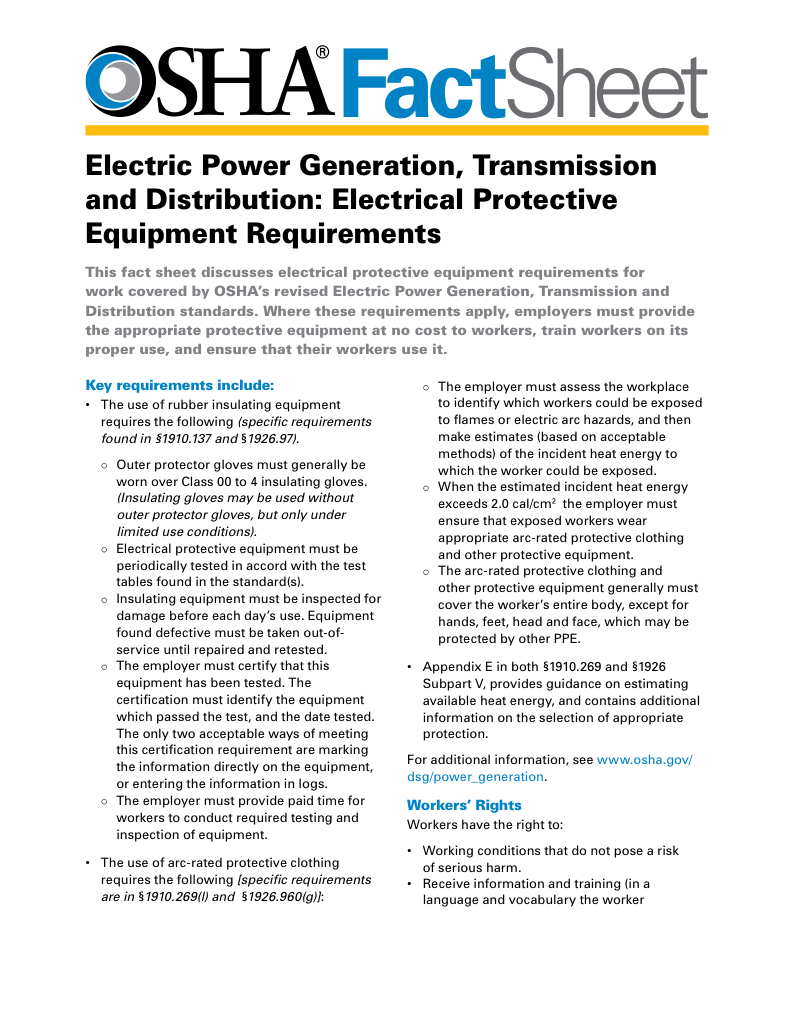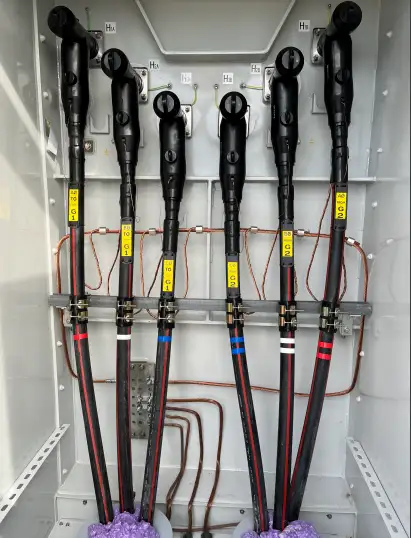Excitation Current Explained

Substation Maintenance Training
Our customized live online or in‑person group training can be delivered to your staff at your location.

- Live Online
- 12 hours Instructor-led
- Group Training Available
Download Our OSHA 3875 Fact Sheet – Electrical PPE for Power Industry Workers

- Follow rules for rubber gloves, arc-rated PPE, and inspection procedures
- Learn employer obligations for testing, certification, and training
- Protect workers from arc flash and electrical shock injuries
Excitation current supplies the field winding to establish magnetic flux in alternators, transformers, and synchronous motors, affecting magnetizing current, voltage regulation, power factor, reactive power flow, and overall machine stability.
What Is Excitation Current in Electrical Machines?
Excitation current energizes field windings to create flux, regulating voltage, power factor, and machine stability.
✅ Sets air-gap flux via DC field or AC magnetizing current.
✅ Determines alternator voltage regulation and reactive power.
✅ Adjusts synchronous motor power factor (lagging/leading).
Excitation current is a critical concept for industrial electricians to understand because it directly impacts the performance, efficiency, and safety of transformers. By grasping the fundamentals, electricians can diagnose potential issues, optimize transformer operation, and ensure the long-term reliability of electrical systems. This article provides a comprehensive overview, including its components, effects on transformer operation, measurement techniques, and practical implications for industrial electricians. For a refresher on basic principles, see how transformers work to frame excitation current in context.
Electrical Transformer Maintenance Training
Substation Maintenance Training
Request a Free Training Quotation
Even when a transformer isn't actively supplying power to a load, a small amount of current still flows through its primary winding. This is the excitation current (EC), and it serves several purposes: This phenomenon is why transformers use power even at no load under normal operating conditions.
- Magnetization: The primary component of EC is the magnetizing current. This creates the magnetic flux within the transformer's core, enabling the transfer of energy between windings.
- Losses: A portion of the EC accounts for energy losses within the transformer. These losses primarily occur due to core losses, such as hysteresis and eddy currents, which generate heat.
- Capacitance: A minor component of the EC is associated with the capacitance of the transformer's insulation.
Understanding each of these elements alongside the major transformer components helps technicians pinpoint sources of excessive excitation current.
FREE EF Electrical Training Catalog
Download our FREE Electrical Training Catalog and explore a full range of expert-led electrical training courses.

- Live online and in-person courses available
- Real-time instruction with Q&A from industry experts
- Flexible scheduling for your convenience
Why is Excitation Current Important?
EC provides valuable insights into a transformer's performance and health:
Efficiency: Higher ECgenerally indicates higher core losses, reducing overall efficiency.
Voltage Regulation: Excessive ECcan lead to voltage regulation issues, affecting the stability of the output voltage.
Transformer Health: Monitoring changes in EC over time can help detect potential problems like core degradation or insulation deterioration. Interpreting these indicators requires familiarity with core current behavior in transformers and its typical waveforms.
Measuring Excitation Current
Several methods are used to measure excitation current:
- Open-Circuit Test: This test involves applying rated voltage to the primary winding while the secondary winding is open. The measured current flowing in the primary winding represents the EC.
- Short-Circuit Test: In this test, the secondary winding is short-circuited, and a reduced voltage is applied to the primary winding. This helps determine the transformer's impedance and losses.
- Inrush Current Test: This test evaluates the transformer's response to sudden energization, which is important for protecting the transformer and associated equipment.
Because induced voltage drives magnetization, reviewing what causes voltage to be induced in a transformer clarifies why EC depends strongly on applied voltage and core design.
Questions and Answers
What is excitation current, and why is it important in transformers?
EC is the current required to energize the core of a transformer and establish the magnetic flux necessary for voltage transformation. Even with no load on the secondary side, a transformer will draw this small amount of current. It's crucial because it enables the transformer to operate and fulfill its function of transferring electrical energy between circuits.
How is excitation current measured, and what are typical values?
EC is typically measured using an open-circuit test. This involves applying the rated voltage to the primary winding while the secondary winding is open. The measured current flowing in the primary winding represents the EC. Typical values vary depending on the transformer's size, design, and core material, but generally range from a fraction of a percent to a few percent of the full load current.
What factors affect excitation current levels in transformers?
Several factors influence EC:
- Core material: The type and quality of the core material significantly affect the magnetic properties.
- Core design: The core's physical dimensions and construction, including the length of the magnetic path and the number of turns in the windings, influence the magnetic flux and EC.
- Applied voltage: The magnitude of the applied voltage directly affects EC. Higher voltage generally leads to higher excitation current.
- Temperature: Temperature variations can affect the core's magnetic properties and, consequently, the EC.
Variations in transformer coil construction can alter leakage reactance and magnetizing characteristics, shifting the expected EC profile.
What does an abnormally high excitation current indicate?
An abnormally high excitation current can signal several potential problems:
Core saturation: If the core is saturated, it can no longer effectively support the magnetic flux, leading to increased EC.
Core damage: Damage to the core, such as cracks or loose laminations, can disrupt the magnetic path and increase EC.
Winding problems: Short circuits or other faults within the windings can also contribute to higher EC.
Overvoltage: Applying a voltage higher than the transformer's rated voltage can cause excessive EC and potentially damage the transformer.
How does excitation current impact transformer losses and efficiency?
EC contributes to transformer losses, primarily through core losses (hysteresis and eddy current losses). These losses dissipate energy as heat, reducing the transformer's overall efficiency. Higher EC generally indicates higher core losses and lower efficiency. Therefore, minimizing EC is desirable for optimal transformer performance. From an energy balance perspective, power conservation in transformers explains how increased core losses manifest even when output power remains unchanged.
EC is a fundamental parameter in transformer operation. Understanding its components, significance, and measurement techniques is essential for ensuring efficient and reliable transformer performance. By monitoring and analyzing excitation current, engineers can optimize transformer operation, diagnose potential issues, and ensure the long-term health of power systems.
Electricity Today T&D Magazine Subscribe for FREE

- Timely insights from industry experts
- Practical solutions T&D engineers
- Free access to every issue
In essence, excitation current is the lifeblood of a transformer, enabling it to function and transfer electrical energy. It's a small but vital current that magnetizes the core, sustains transformer action, and accounts for internal losses. For industrial electricians, understanding EC is crucial for diagnosing transformer issues, optimizing performance, and ensuring the safety and reliability of electrical systems. By monitoring and analyzing this current, professionals can gain valuable insights into the health and efficiency of transformers, ultimately contributing to the smooth operation of industrial processes.







